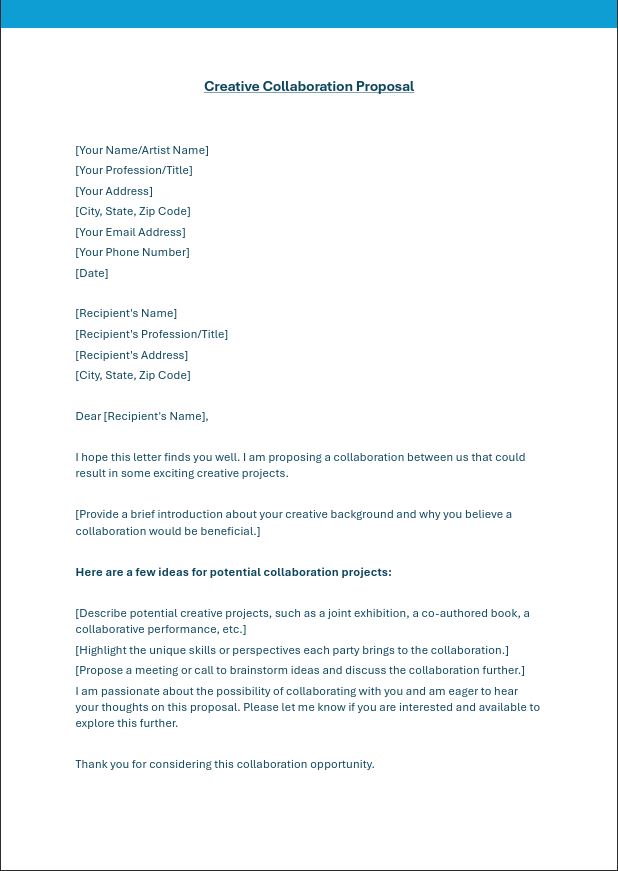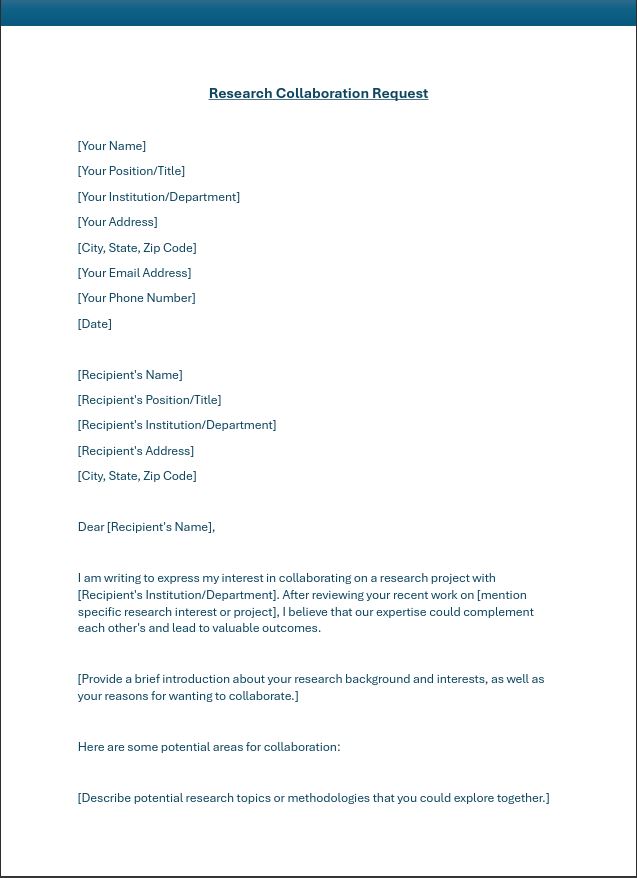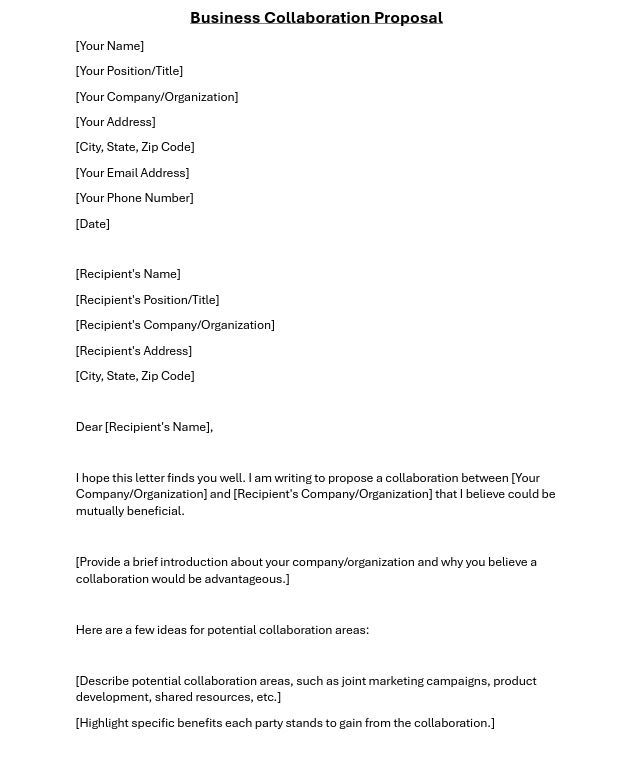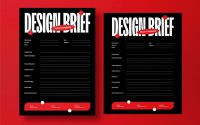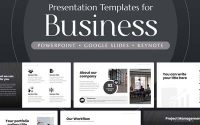Collaboration is an essential aspect of any successful business or project. It allows individuals or teams to work together, share ideas, and achieve common goals. However, coordinating and communicating effectively in a collaborative environment can be challenging. This is where professional collaboration letter templates come into play. In this article, I will introduce you to collaboration letter templates, discuss their benefits, common types, and provide tips on how to use them effectively. By the end, you’ll have the tools you need to streamline your collaborative efforts and achieve greater success.
Introduction to Collaboration Letter Templates
Collaboration letter templates are pre-designed documents that can be customized and used for various collaborative purposes. These templates provide a structured format for communicating important information between collaborators, ensuring clarity and consistency in your communication. Whether you need to introduce a new project, request assistance, or provide updates, collaboration letter templates can save you time and effort by eliminating the need to start from scratch every time.
Benefits of Using Collaboration Letter Templates
The use of collaboration letter templates offers several advantages. Firstly, they provide a standardized format for communication, ensuring that all necessary information is included and presented in a clear and organized manner. This helps to avoid misunderstandings and confusion among collaborators. Additionally, collaboration letter templates save valuable time by eliminating the need to draft a new letter for each collaborative effort. Instead, you can simply customize the template to fit the specific purpose and context of your collaboration. This allows you to focus your time and energy on the content and goals of the collaboration itself.
Another benefit of using collaboration letter templates is consistency. When multiple collaborators are involved in a project, it’s important to maintain a consistent tone and style of communication. Collaboration letter templates help to achieve this by providing a unified framework that can be followed by all participants. This consistency fosters a sense of professionalism and reliability, enhancing the overall effectiveness of your collaborative efforts.
Common Types of Collaboration Letters
Collaboration letter templates come in various forms, depending on the purpose and context of your collaboration. Some common types include:
- Introduction Letter: This type of template is used to introduce a new project, initiative, or partnership to potential collaborators. It provides an overview of the project goals, benefits, and expectations, setting the foundation for future collaboration.
- Request Letter: When you need assistance, resources, or expertise from another individual or team, a request letter template can be used. It outlines the specific request, explains the rationale behind it, and highlights the potential benefits for all parties involved.
- Progress Update Letter: To keep collaborators informed about the progress of a project, a progress update letter template can be utilized. This template includes key milestones, achievements, challenges, and future plans, ensuring that everyone is on the same page.
- Thank You Letter: Expressing gratitude is crucial in building and maintaining positive relationships with collaborators. A thank you letter template allows you to show appreciation for their contributions, support, or partnership.
By having these common types of collaboration letter templates at your disposal, you can easily adapt and use them as needed, making your communication more efficient and effective.
How to Use Collaboration Letter Templates Effectively
To maximize the benefits of collaboration letter templates, it’s important to use them effectively. Here are some tips to help you get the most out of your templates:
- Customize the Template: While collaboration letter templates provide a structure, it’s essential to tailor them to your specific needs. Add or remove sections, modify the language, and personalize the content to ensure that it aligns with your collaboration goals and requirements.
- Be Clear and Concise: Collaboration letter templates should convey information in a clear and concise manner. Avoid excessive jargon or complex language that may confuse your collaborators. Use bullet points or numbered lists to break down information into digestible chunks.
- Maintain a Professional Tone: Regardless of the type of collaboration letter template you are using, it’s crucial to maintain a professional tone throughout. Be respectful, courteous, and avoid any language that may be perceived as offensive or unprofessional.
- Proofread and Edit: Before sending out a collaboration letter, always proofread and edit it for any spelling or grammatical errors. A well-written letter enhances your credibility and professionalism.
- Follow-Up: Collaboration letter templates are just the starting point. After sending out a letter, follow up with your collaborators to ensure that they have received and understood the information. This helps to establish open lines of communication and build stronger relationships.
By following these tips, you can use collaboration letter templates effectively and enhance your collaborative efforts.
Examples of Successful Collaboration Letters
To gain a better understanding of how collaboration letter templates can be used, let’s explore some examples of successful letters:
Creative Collaboration Proposal Letter
Research Collaboration Request
Business Collaboration Proposal
These examples demonstrate how collaboration letters can be customized and used for different purposes, helping you communicate effectively with your collaborators.
Where to Find Collaboration Letter Templates
Finding collaboration letter templates is easier than ever, thanks to online resources. Several websites offer free or paid templates that you can download and customize to fit your needs. Some popular platforms include:
- Microsoft Office Templates: Microsoft Office provides a wide range of collaboration letter templates that can be accessed through their online template library.
- Template.net: Template.net offers a vast collection of professionally designed collaboration letter templates that can be downloaded in various file formats.
- Canva: Canva is a popular graphic design platform that offers customizable collaboration letter templates, allowing you to add your own branding and style.
- Project Management Software: Many project management software tools, such as Asana or Trello, include collaboration letter templates as part of their features.
Explore these platforms and choose the one that suits your needs and preferences best.
Collaboration Letter Template Software and Tools
If you find yourself frequently using collaboration letter templates, you may want to consider using dedicated software or tools. These tools provide additional features and functionalities to streamline your collaboration efforts. Some popular collaboration letter template software and tools include:
- Google Docs: Google Docs offers a collaborative writing platform where multiple users can work on the same document simultaneously. It provides a wide range of templates, including collaboration letter templates.
- Adobe Acrobat: Adobe Acrobat allows you to create, edit, and sign PDF documents, making it a useful tool for collaboration letter templates.
- Mailchimp: Mailchimp is an email marketing platform that provides customizable email templates, which can be used for collaboration purposes, such as progress updates or thank you letters.
- DocuSign: DocuSign is a digital signature service that allows you to send, sign, and manage documents securely. It can be used for collaboration letter templates that require signatures or approvals.
These software and tools can enhance your collaboration letter experience and provide additional functionalities to streamline your collaborative efforts.
Best Practices for Using Collaboration Letter Templates
To ensure the effectiveness of your collaboration letters, here are some best practices to keep in mind:
- Keep Templates Organized: Create a dedicated folder or repository to store your collaboration letter templates. This makes it easier to locate and access them when needed.
- Update Templates Regularly: As your collaboration needs evolve, update your templates accordingly. Regularly review and revise your templates to keep them relevant and up to date.
- Seek Feedback: Encourage your collaborators to provide feedback on the templates you use. Their insights can help you improve the templates and make them more effective.
- Share Templates with Team Members: If you are working within a team or organization, share your collaboration letter templates with your colleagues. This promotes consistency and ensures that everyone is using the same templates.
By following these best practices, you can optimize the use of collaboration letters and achieve better results in your collaborative efforts.
Conclusion: Streamlining Your Collaborative Efforts with Collaboration Letters
Collaboration is the key to success in today’s fast-paced business world. By utilizing professional collaboration letter templates, you can streamline your collaborative efforts, save time, and ensure effective communication. Whether you are introducing a new project, requesting assistance, or providing progress updates, collaboration letter templates provide a structured framework for your communication needs. Remember to customize the templates, maintain a professional tone, and follow best practices to maximize their effectiveness. With the right collaboration letter templates and tools at your disposal, you’ll be well on your way to achieving greater success in your collaborative endeavors.
